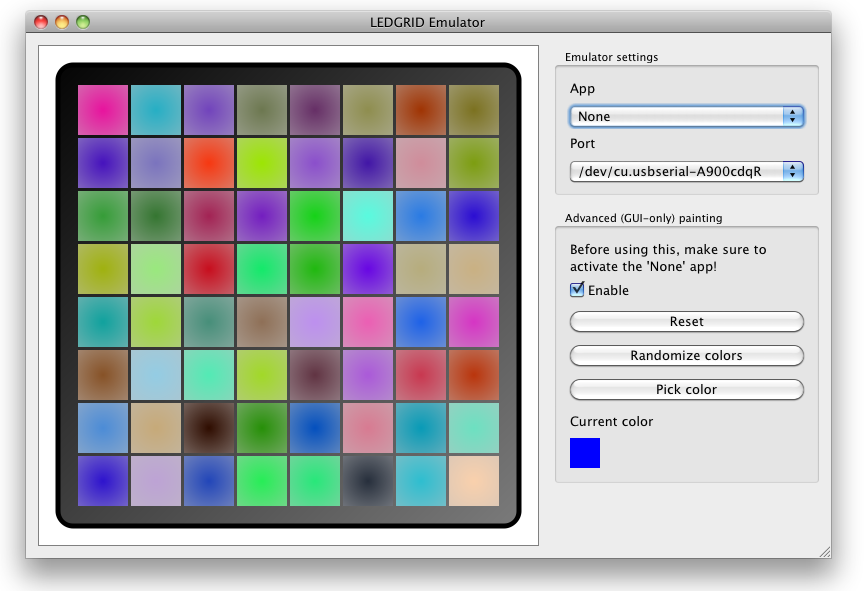School year: first master year, second semester.
In the “Mobile and Pervasive Computing” course, we’d get a hands-on introduction to basic electronics and Arduino. Then, we’d have to come up with a cool idea and execute on it in pairs. I worked with Jens Bruggemans..
We decided to build something like Monome, but:
- no sound support
- completely stand-alone instead of a pc dependency
- much cheaper
- apps (games), including multiplayer (still without a pc!)
- emulator to develop apps on the pc, which is much faster than Arduino’s “code, build, upload, run, repeat” cycle

We used the Arduino Mega, which didn’t have enough PWMs to steer 64 RGB LEDs. So we had to simulate this using timer interrupts and digital I/O. To facilitate this, I wrote the FlexiTimer2 library (based on the MsTimer2 library). The result is NUM_ROWS*INTENSITIES*REFRESH_RATE = 8*6*60 = 2880 interrupts/sec being used to successfully control 64 RGB LEDs with only 16 digital I/O pins. The color range is limited to 343 colors, because a LED can be enabled or disabled 6 times per refresh, hence there are 7^3=343 possible combinations.
As a consequence of this large number of interrupts, Arduino’s Serial was no longer reliable. We had to detect corruption and resend the data whenever this happened.
To switch to a different app, we used RFID tags. Apps included:
- Remote Control, Remotely Controlled Display
- Game of Life, Pong, Bomberman
- HSV Color Wheel, Numbers, Paint
The LEDGRID Emulator is written in C++/Qt and is a cross-platform app (tested on OS X 10.6, Windows XP and Windows 7). It can run LEDGRID apps (which are written in C) without any modifications. It emulates Serial and the LEDGRID API. I also had to fork QextSerialPort to fix build issues on OS X and Windows.